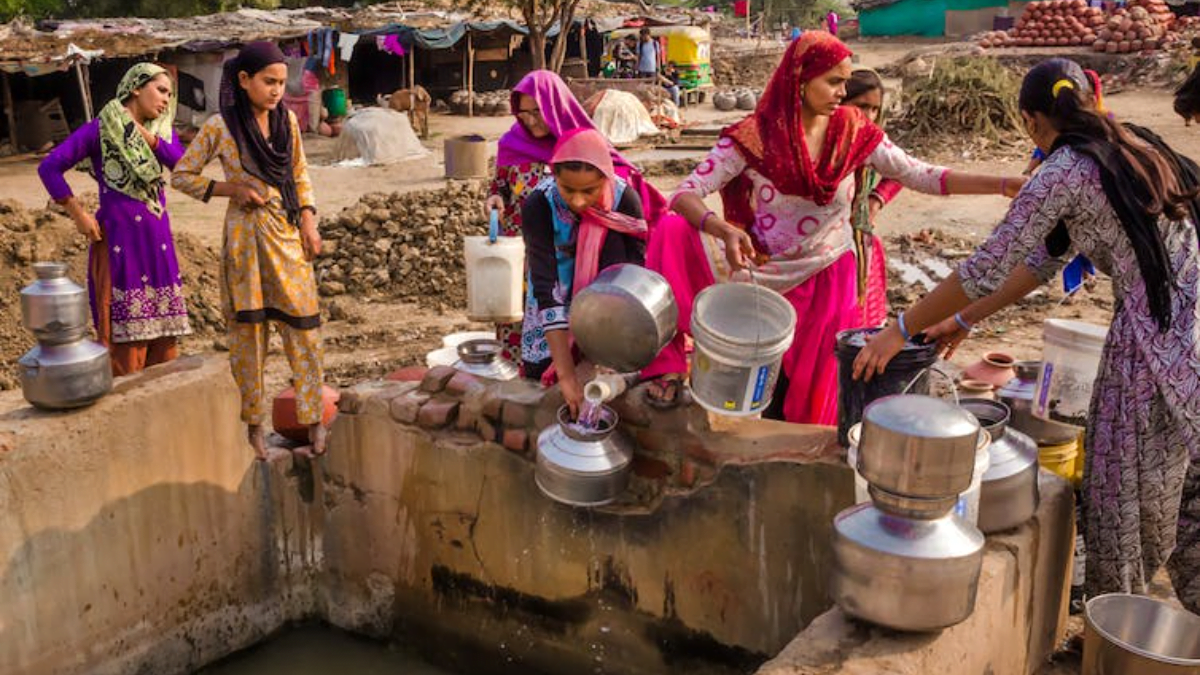In India, the problem of drought and its corollary- water scarcity, is becoming more prominent with every passing summer as the global temperatures increase and the climatic conditions become increasingly unpredictable. This water inequality is especially visible in the rural areas of drought-prone states like Rajasthan, Maharashtra, Gujarat and Madhya Pradesh, as also other states where mismanagement and wear-and-tear of water resources have led to a severe scarcity of drinking water.
Caste, gender and the right to clean water
A disproportionate impact of such scarcity is felt by women, whose capability to fetch water over long distances multiple times a day determines when the meals are cooked and the clothes are washed which decides when the men go to work, how much they are able to earn and when the children go to school. In extreme cases of water-scarcity in economically and socially backward areas, girls are withdrawn from school and sent to assist their mothers in fetching water.
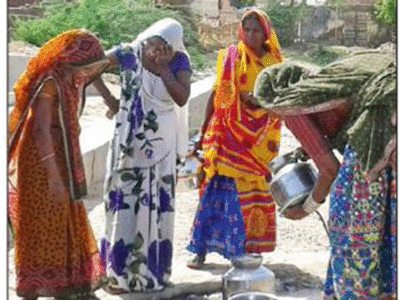
Amongst the people facing the debilitating effects of water inequality, it is the socially oppressed classes- the Dalits and the Adivasis- who face the most terrible brunt. Though various legal provisions outlawing untouchability and discrimination on the grounds of caste (amongst other criteria) are in place in India, caste-based discrimination continues to thrive unabated in certain nooks of the country through active prevention of the “lower castes” from accessing wells.
Handpumps are designated as “private” and there is indirect discrimination of Adivasi and Dalit villages, through official ignorance of their basic rights to clean water and sanitation. ‘They make promises during the time of elections, only to forget them later’, is a refrain adopted by many Dalit and Adivasi villagers facing water inequality, in field-reports.
‘They make promises during the time of elections, only to forget them later’, is a refrain adopted by many Dalit and Adivasi villagers facing water inequality, in field-reports.
The instance of Dalit women being prevented from accessing safe sources of water and consequently being forced to travel long distances outside their villages, is seen best through the Bundelkhand case. More frequent are the instances of “upper-caste” women pouring water into Dalit women’s vessels in a symbolic exercise of power over their basic human rights. “Upper-caste” villagers are also known to undertake a “purifying exercise” in community wells after they have been used by Dalits, and Dalit women are prevented from using water sources before the upper-caste women have had their fill.
Water inequality in India
In Indian culture, water has been a primordial spiritual symbol ever since the Vedic period and has acquired the nature of a ritualistic medium, capable of purifying the upper-castes and being polluted by the “lower-castes” in the post-Vedic period. The first forays into the Dalit right to community water sources and the first protest against water inequality in India was made through the Mahad Satyagraha launched by Dr. BR Ambedkar on 20th March 1927, which saw Dalit leaders marching into Mahad district, Maharashtra, and symbolically drinking water from the Chavdar Lake, which had been reaffirmed as public property by the Bole Resolution, 1923, but had until then been controlled for private use by the upper castes.
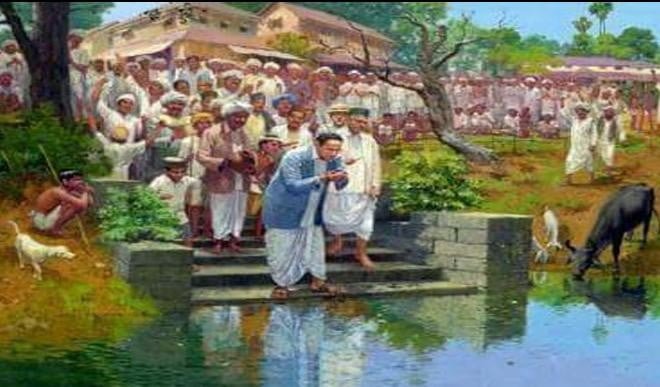
Nevertheless, the attribution of Dalits to “pollution” and their consequent alienation from the mainstream society continues till-date, predominantly in rural areas. The significant gap in the instances of caste-discrimination between cities and the countryside has been attributed to the ready availability of piped water in the cities which prevents the need for private rights over water sources, and the absence of the same in the countryside where water was scarce and the progress of public works was not enough to end the dominance of private rights causing water inequality.
The Jal Jeevan Mission- Har Ghar Jal was launched by the Central Government in August 2019 in the backdrop of a mere 3.23 Crore (17%) rural households having tap water connections, with an aim to enable every rural household in the country to have assured potable (tap) water by 2024 and end water inequality. Presently, out of an estimated 19.43 crore rural households, nearly 12.69 crore (65.33 %) have access to tap-water. At the same time, however, at-least 44% of rural households in scheduled tribes-dominated areas remain deprived of the same.
Kerala, Rajasthan, Jharkhand, West Bengal and Lakshadweep are the worst-faring states in rural tap-water connections, with the tribal and scheduled-caste dominated areas being the worst sufferers of this administrative malaise.
Kerala, Rajasthan, Jharkhand, West Bengal and Lakshadweep are the worst-faring states in rural tap-water connections, with the tribal and scheduled-caste dominated areas being the worst sufferers of this administrative malaise.
Water inequality in Rajasthan
Rajasthan sees an annual average rainfall between 200 and 400 mm and an acute shortage of drinking water during the summer season. The Morwal and Ghata villages in the Gogunda block of Udaipur district, Rajasthan, have a majority Adivasi population and regularly witness an acute scarcity of potable groundwater which necessitates women to travel several kilometers over difficult terrain to fetch water.
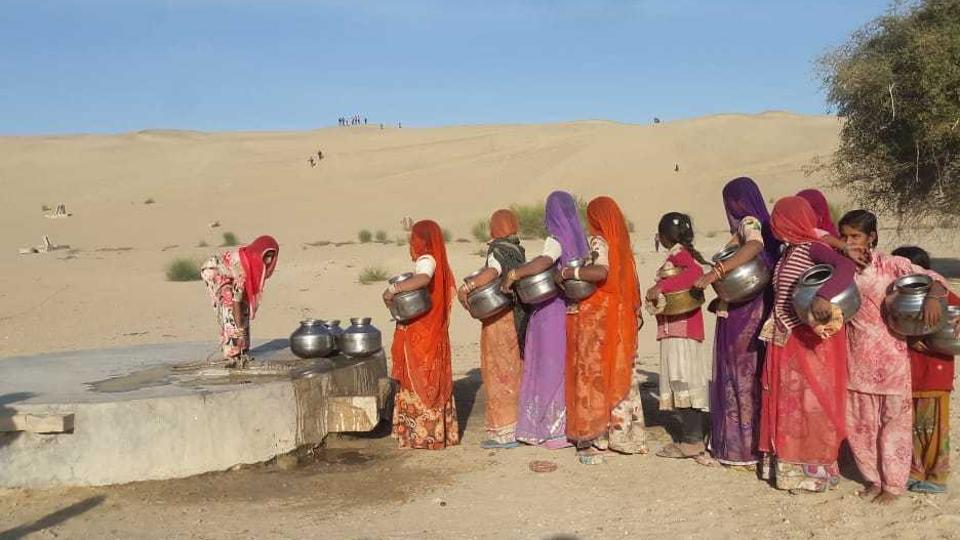
As of 2019, the Kaniya village in Bhilwara tehsil, Rajasthan, housing a minority population of scheduled castes and tribes (Census of 2011), had three wells, sharply divided on caste lines with the clean and abundant one reserved for the higher castes (Rajputs, Brahmins, Jats and Muslims), and the other two filled with dirt, reserved for the SCs and STs, who were victims of water inequality.
This meant that women of the latter two communities had to wait in queues in-front of the dirt-filled wells for 6-8 hours for adequate water to become available. While the state-sponsored door-to-door water tanker facility saved upper-caste women from the daily drudgery of water-carrying, the “lower-caste” women could not avail the same benefit since they could ill-afford to buy the Rs. 250 to 500 – worth tankers on a regular basis.
Water inequality in Kerala
In Kerala, the Dalit-dominated colonies in the Govindapuram village, Palakkad district, have made headlines time-and-again over active caste-based discrimination manifested in separate utensils in tea shops and separate water taps for the “upper-castes” and the “Chakkliyar” communities, and the obligation on the latter to use the community water-pipe only after the former had already used it.

The Palakkad district has the highest number of rivers, rivulets, ponds, dams and canals in Kerala, yet it is severely water-stressed due to the presence of a large number of water-guzzling industries like Coca-Cola Co., whose bottling industry Hindustan Coca-Cola Beverages Private Limited (HCCB) long exploited groundwater at the tribal-dominated Plachimada village (Palakkad), and its rival Pepsico Inc. in the water-stressed industrial belt of Kanjikode.
Water inequality in Jharkhand
In Jharkhand, the Sundarpahari Subdivision in the Godda district houses several highland tribes in its adjoining mountains and Santhals and other tribes in its plains and forests. Under the state government’s scheme to develop primitive tribal groups (PTG), solar-powered water towers were set up in the hilly regions to combat water inequality.
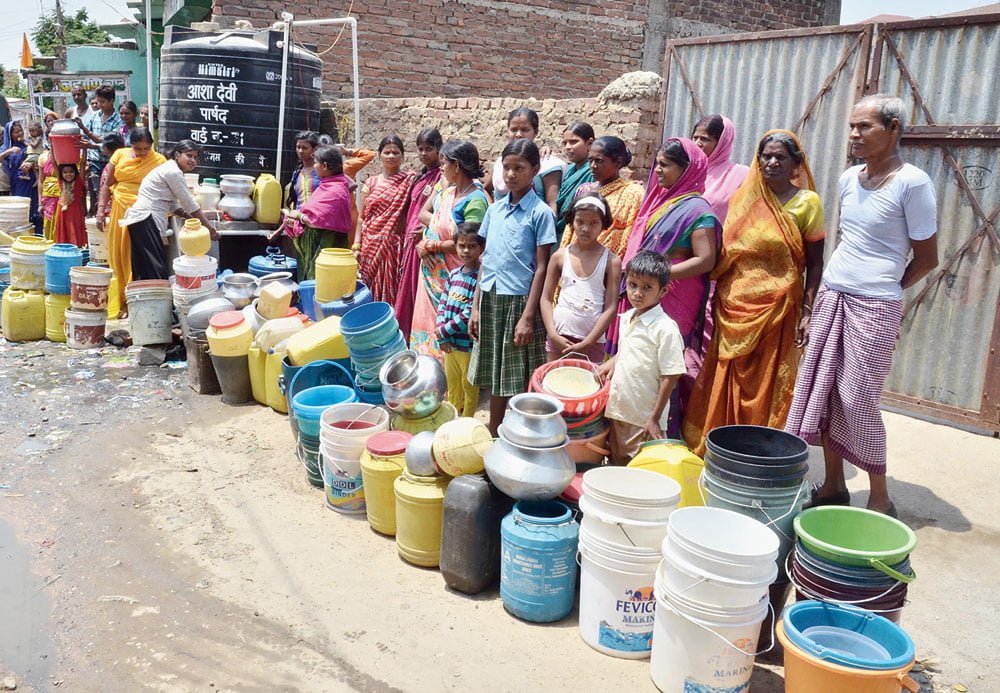
However, most of these were rendered inoperative due to the solar panel-operated pumps being stolen, the faulty nature of the boring-works and disaster-related destruction of the remaining water sources.
Here too, the onus of fetching water fell upon women, who had to travel multiple times a day over long distances and difficult terrains to access wells and waterfalls.
Here too, the onus of fetching water fell upon women, who had to travel multiple times a day over long distances and difficult terrains to access wells and waterfalls. These travels become more precarious during the monsoon season, as the terrain becomes slippery.
Water inequality in West Bengal
In West Bengal, the tribal-dominated districts of Purulia, Bankura and Jhargram have been facing severe water scarcity and water inequality for years, characteristic of the rural landscape of West Bengal in general. Fluoride-contaminated water is a serious threat to the people of Purulia, while Jhargram witnesses a lack of drinking water, toilets and medical facilities.
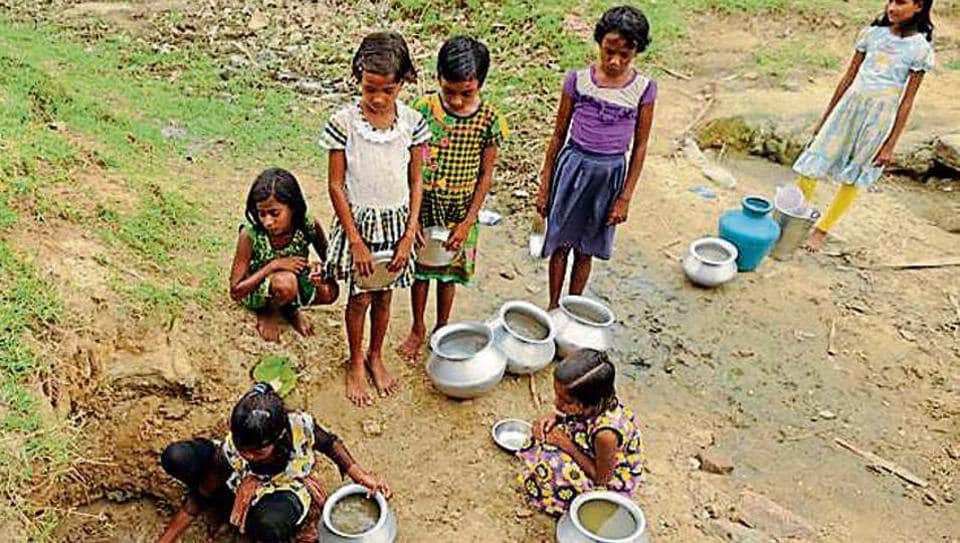
These difficulties have been exacerbated in the summer season. This problem is best represented through the condition of the schools and anganwadis of Jhargram, with only 5.92 % of anganwadis (an important occupational centre for women) having tap-water connections.
Water inequality and SC/ST women
SC and ST women in rural areas often face the threefold disadvantage of caste, class and gender, facing violence from upper-caste men and women while accessing their water-sources to quench their and their families’ thirst in the absence of alternatives, and also facing violence from their families when they fail to bring water to their households in a timely manner.
On the long journey to access water outside villages, they also face the risk of injury and sexual violence, and the sole option of storm-water sources or drains in many circumstances make them and their families vulnerable to diseases.
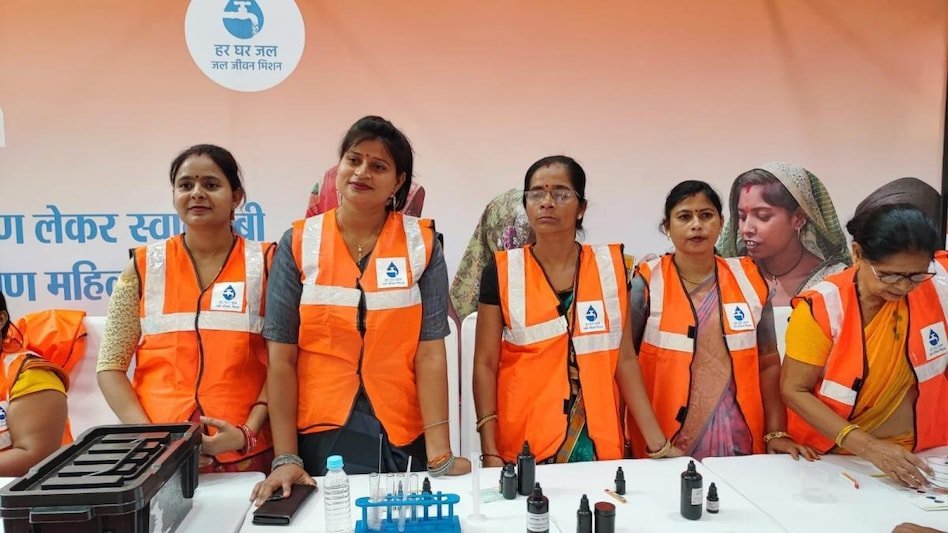
The rising presence of women in Pani Panchayats and their increasing role as ‘Jal Sakhis’, implies that they have a huge potential as leaders in water conservation and sustainable development who can fight water inequality. It is imperative that the population worst affected by climate change and water scarcity in India- the Dalit and Adivasi women, be brought to the forefront of conservation efforts in the near future to end water inequality in India.
